

Chilli is considered one of the most important commercially and widely used spice crops also known as a wonder spice. Different varieties are cultivated for varied uses like vegetables, pickles, spices and condiments. Often used as a vegetable as well as a spice, it is gaining importance in the global market because of its by-products like powder, oleoresin, capsanthin, chilli paste and chilli oil. Capsicum annuum L. (chilli) belongs to the family Solanaceae. Fresh chilli is a good source of different vitamins including vitamins E and C as well as provitamin A and carotenoid components with well-known beneficial antioxidant properties. It is also used as a pain reliever, an immunity booster and prevents cardiovascular disorders.
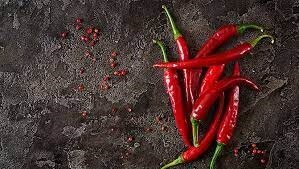
The demand for value-added chilli products like chilli powder, colour oleoresin and pungent oleoresin has been steadily increasing. In the food and beverage industries, chilli has acquired great importance in the form of oleoresin which permits better distribution of colour and flavour in food as compared to chilli powder.
These are the various types of value-added products:
1. Red Chilli Powder
Indian cuisine is all about its distinct flavour and aromatic spices. Red chilli powder or “Lal Mirch” is quite common in every Indian household and has been used for ages. Red chillies are dried and then crushed to a powdered form. Everyone can use this spice in “tadka”, in sauce, curries, or for garnishing purposes. Red chilli powder not only adds a spicy taste and colour to the dish but also has impeccable health benefits. “Lal Mirch” has the capability to accelerate the digestive process, build immunity, maintain blood pressure, has an anti-inflammatory effect, improve eye health and prevent night blindness. Red chillies are enriched with nutrients and include Vitamin C and Vitamin A.
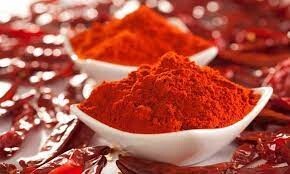
Ingredients:
- Dried Red Chillies
Method:
- Step 1: Harvesting of mature chillies from farm
- Step 2:Drying of chillies
- Step 3: Primary processing of such as cleaning, grading and sorting
- Step 4:Stem cutting of chillies
- Step 5: Crushing and pulverization of chillies by traditional method or modern method
- Step 6: Sieving of chilli powder for a smooth and homogeneous method
- Step 6:• Packaging and labelling in the required size
2. Red Chilli Paste
Chilli paste usually refers to a paste where the main ingredient is chilli pepper. Some are used as a cooking ingredient, while others are used to season a dish after preparation. Some are fermented with beans, as in Chinese doubanjiang, and some are prepared with powdered fermented beans, as in Korean gochujang. There are different regional varieties of chilli paste and also within the same cuisine
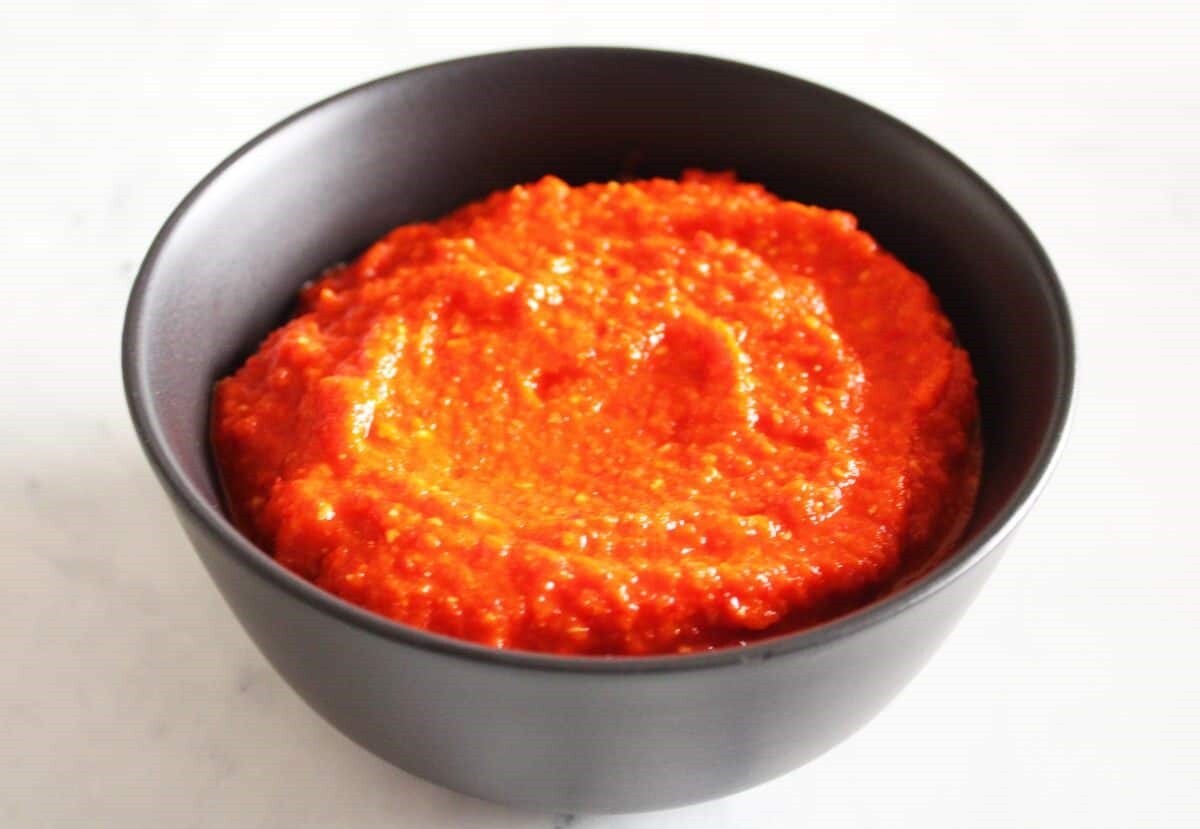
Ingredients:
- Red Chilli Puree/Chopped Red Chillies
- Vinegar
- Sugar
- Salt
- Modified Starch
- Citric Acid
- Sodium Benzoate
Method:
- Step 1: Harvesting of mature chillies from farm
- Step 2: Primary processing of such as cleaning, washing, grading and sorting
- Step 3: Stem cutting of chillies
- Step 4: Crushing and pulverization of chillies by pulper/pulveriser
- Step 5: Cooking of chilli paste with suggested ingredients at certain time temperature combination @65-72℃ for 30-35 min.
- Step 6: Hot filling in glass bottle and PET bottles (after cooling)
- Step 7: Packaging in required size packaging
3. Chilli Sauce
Chilli sauce may be hot, sweet or a combination thereof, and may differ from hot sauce in that many sweet or mild varieties exist, which is typically lacking in hot sauces. Several varieties of chilli sauce include sugar in their preparation, such as the Thai sweet chilli sauce and Filipino agre dulce, which adds sweetness to their flavor profile. Sometimes, chilli sauces are prepared with red tomato as primary ingredients. Many chilli sauces may have a thicker texture and viscosity when compared to hot sauces.
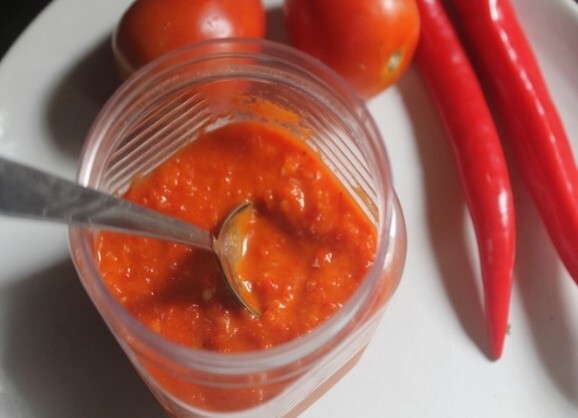
Ingredients:
- Red Chilli Puree/Chopped Red Chillies
- Tomato Puree
- Garlic Paste
- Vinegar
- Sugar
- Salt
- Modified Starch
- Citric Acid
- Sodium benzoate
Method:
- Step 1:Harvesting of mature chillies from farm
- Step 2:Primary processing of such as cleaning, washing, grading and sorting
- Step 3:Stem cutting of chillies
- Step 4:Crushing and pulverization of chillies by pulper/pulveriser
- Step 5:Cooking of chilli paste with suggested ingredients at certain time temperature combination @ 65-72℃ for 30-35 min.
- Step 6:Hot filling in glass bottle and PET bottles (after cooling)
- Step 7:Packaging in required size packaging
4. Red Chilli Oleoresin
Paprika oleoresin (also known as paprika extract) is an oil-soluble extract from the fruits of Capsicum annuum or Capsicum frutescens, and is primarily used as a colouring and/or flavouring in food products. It is composed of vegetable oil, capsaicin, the main flavouring compound giving pungency in higher concentrations, and capsanthin and capsorubin, the main colouring compounds (among other carotenoids). Foods coloured with paprika oleoresin include cheese, orange juice, spice mixtures, sauces, sweets, ketchup, soups, fish fingers, chips, pastries, fries, dressings, seasonings, jellies, bacon and ham.
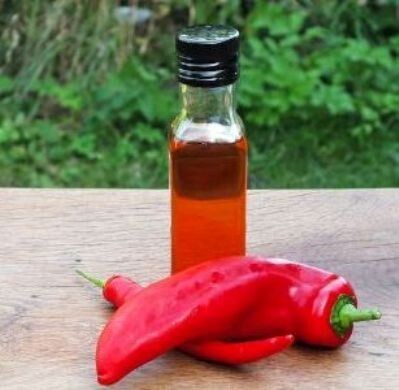
Method:
- Step 1:First take coarser chilli powder
- Step 2:Primary processing such as cleaning to remove extraneous method
- Step 3:Ground chilli powder to the required mesh size
- Step 4:Prepare Sample for extraction process
- Step 5:By using SCFE (Super Critical Fluid Extraction) process
- Step 6:The appropriate solvent is then used to begin the extraction process
- Step 7:Ethylene dichloride, hexane, alcohol, or acetone are the solvents that will be used.
- Step 8:The solvent is percolated through a bed of ground oleoresin packed in an SS percolator at room temperature to complete the extraction
- Step 9:Then it packed in required size of packaging
5. Red Chilli Oil
Chilli oil is a condiment made from vegetable oil that has been infused with chilli peppers. Different types of oil and hot peppers are used, and other components may also be included. It is commonly used in Chinese cuisine, Southeast Asian cuisine, and elsewhere. It is also used as a dip for meat and dim sum. Chilli oil is typically red in colour. Other spices may be included such as Sichuan pepper, garlic, or paprika. Chilli oil is easy to prepare, and is also commercially available in glass jars or bottles.

Method:
- Step 1:First take coarser chilli powder or particular variety of chilli
- Step 2:Primary processing such as cleaning to remove extraneous method
- Step 3:Ground chilli powder to the required mesh size
- Step 4:Prepare Sample for extraction process
- Step 5:By using SCFE (Super Critical Fluid Extraction) process or by using Clevenger Extraction Method
- Step 6:The appropriate solvent is then used to begin the extraction process
- Step 7:Ethylene dichloride, hexane, alcohol, or acetone are the solvents that will be used.
- Step 8:The solvent is percolated through a bed of ground oleoresin packed in an SS percolator at room temperature to complete the extraction
- Step 9:Then it packed in required size of packaging
(Content shared by Ms. Monika Bhoi, M.Tech Food Technologist, DRP (District Resource Person) Gujarat State, PMFME Scheme)